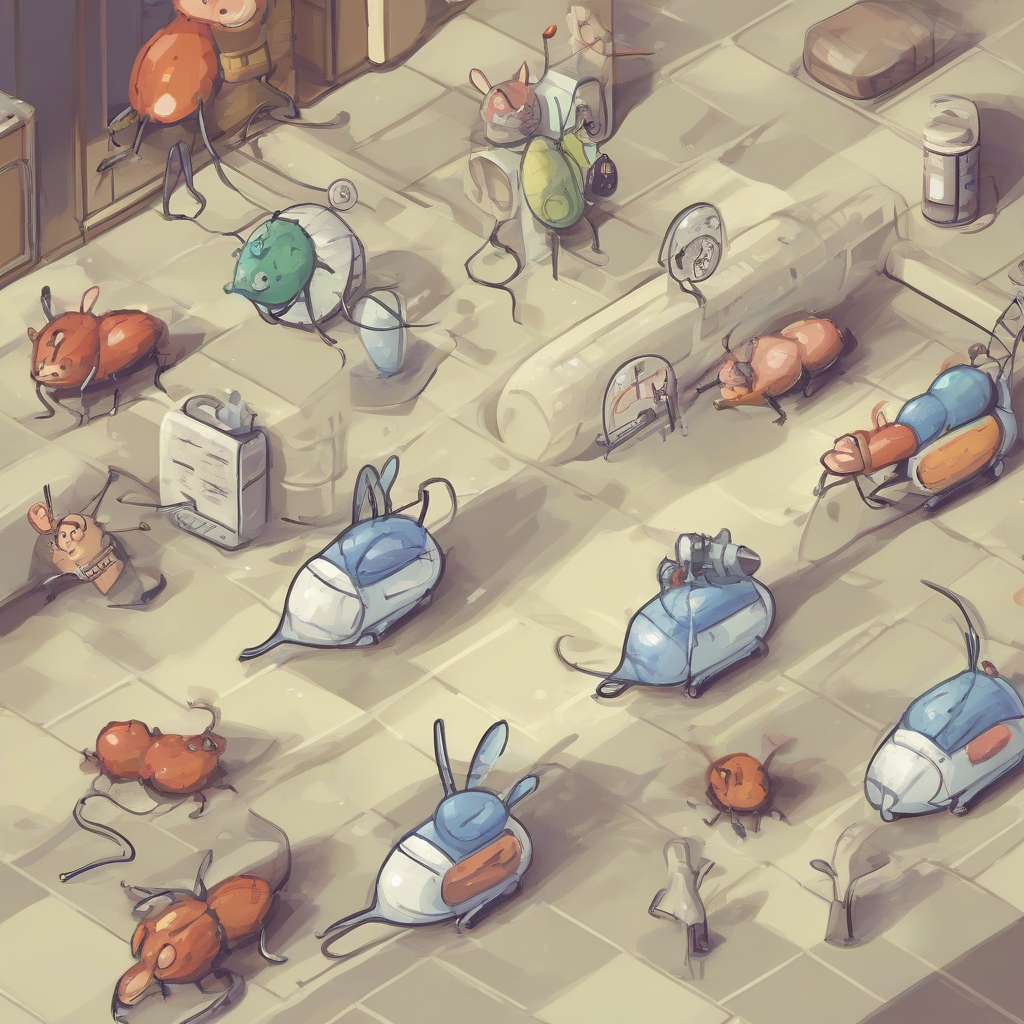Battling the Bugs: A Comprehensive Guide to Bat Pest Control
Bats, often misunderstood creatures of the night, can sometimes become unwelcome guests in our homes and buildings. While generally beneficial for the ecosystem, their presence indoors can pose health risks and structural damage. This comprehensive guide explores effective and humane bat pest control methods, emphasizing prevention and ethical solutions.
Understanding Bats and Their Behavior
Before tackling a bat infestation, understanding bat behavior is crucial. This knowledge informs the most effective and humane approach to removal and prevention. Different bat species exhibit varying behaviors and preferences, impacting the control strategies employed.
Types of Bats and Their Habitats
- Little Brown Bats: Common in North America, these bats often colonize attics and wall voids.
- Big Brown Bats: Larger than little brown bats, they also favor attics and similar spaces.
- Indiana Bats: These bats are endangered and require special consideration in any removal efforts.
- Mexican Free-tailed Bats: Found in the southern United States, they frequently roost in large colonies.
Understanding the specific bat species present is vital for selecting appropriate control methods. Incorrect identification can lead to ineffective or even harmful approaches.
Signs of a Bat Infestation
- Droppings (guano): Accumulation of bat droppings is a strong indicator of infestation.
- Noises: Chirping, scratching, or fluttering sounds, especially at dusk and dawn.
- Sightings: Direct observation of bats entering or exiting the building.
- Odor: A distinct musky odor from guano accumulation.
- Damage: Evidence of chewing on wood or insulation.
Humane Bat Removal and Exclusion
The ethical removal of bats is paramount. Killing bats is illegal in many jurisdictions and environmentally damaging. The focus should be on humane exclusion, guiding bats out of the building while preventing their re-entry.
One-Way Exclusion
This involves sealing all entry points, allowing bats to exit but preventing their return. This method is most effective during the late summer or early fall when young bats are capable of flight.
- Identify entry points: Carefully inspect the building’s exterior and interior for cracks, gaps, and openings.
- Seal openings: Use appropriate materials like wire mesh, caulk, or expanding foam to seal openings.
- Install one-way doors: These specialized devices allow bats to exit but prevent re-entry.
- Monitor for effectiveness: Regularly check for any remaining entry points or signs of re-entry.
Timing of Exclusion
The best time for bat exclusion is during the late summer or early fall. This is when young bats are fully developed and capable of flight. Excluding bats during the breeding season or when young are present can endanger their lives. Consult with wildlife professionals to determine the optimal timing.
Dealing with Bat Guano
Bat guano contains histoplasmosis, a fungus that can cause respiratory illness. Therefore, proper cleanup is essential. Never attempt to clean up guano without proper protective gear.
Safe Guano Removal
- Protective gear: Wear N95 respirator mask, gloves, eye protection, and protective clothing.
- Wet cleanup: Dampen the guano to minimize dust dispersal.
- Bagging and disposal: Seal guano in heavy-duty plastic bags and dispose of it according to local regulations.
- Professional help: For large infestations or areas with significant guano accumulation, contact a professional wildlife removal service.
Prevention Strategies
Preventing future bat infestations is crucial. Regular inspection and proactive measures significantly reduce the risk of future problems.
Regular Inspections
- Inspect attic and exterior walls: Regularly check for cracks, gaps, or openings that bats could use to enter.
- Check for signs of activity: Look for droppings, noises, or other signs of bat presence.
- Seasonal inspections: Perform inspections in spring and fall to identify potential entry points.
Sealing Entry Points
Regularly sealing potential entry points is a proactive approach to prevent future infestations. This includes sealing cracks, gaps, and openings around chimneys, vents, and other areas where bats may enter.
Landscape Management
Modifying the landscape can deter bats from establishing roosts near your home. Removing potential roosting sites like dead trees or dense vegetation can reduce the attractiveness of your property to bats.
When to Call a Professional
While many bat control measures can be handled independently, certain situations necessitate professional intervention.
- Large infestations: Extensive infestations require specialized knowledge and equipment.
- Difficult-to-reach areas: Access to attics, wall voids, or other difficult areas may require professional assistance.
- Health concerns: If you have concerns about bat-related health risks, seek professional advice.
- Endangered species: If you suspect the presence of endangered bat species, contact wildlife professionals for guidance.
Legal Considerations
It’s crucial to understand local and national regulations regarding bat control. In many areas, harming or killing bats is illegal. Always prioritize humane and legal methods of bat removal and prevention. Check your local laws and regulations before undertaking any bat control measures.
Long-Term Solutions
Successfully managing bat infestations requires a multifaceted approach. Combining preventative measures with appropriate exclusion techniques ensures long-term solutions and minimizes the risk of future problems.
- Ongoing maintenance: Regularly inspect and maintain your building to prevent new entry points.
- Educate others: Share information about humane bat control with family, friends, and neighbors.
- Support bat conservation: Learn about local bat conservation efforts and support initiatives promoting bat populations.
